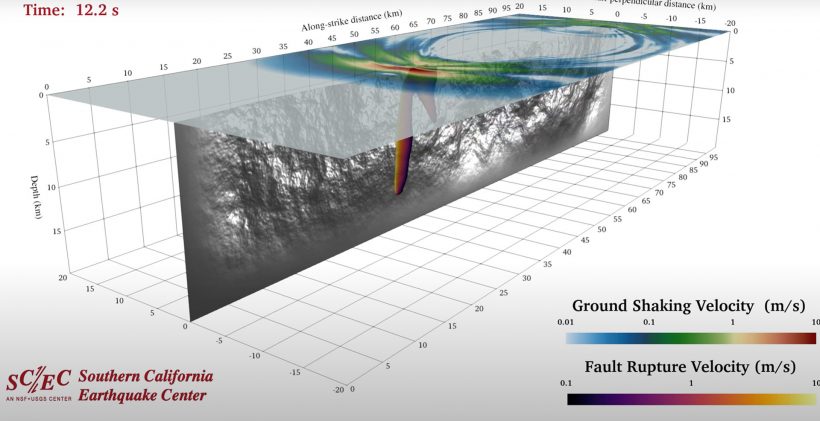Researchers from the University of Southern California and the Southern California Earthquake Center are using ALCF supercomputers to enhance earthquake simulation and hazard mapping tools to provide the best possible information in terms of earthquake ground motion and seismic hazard. This video shows a magnitude 7.6 earthquake with rupture propagation and resulting wavefield at the surface computed by the dynamic rupture code SORD along a vertically dipping strike-slip fault with superimposed fault roughness. The advancement of earthquake modeling and simulation tools is critical to reducing uncertainties and improving the accuracy of seismic hazard assessments, enabling the development of design and mitigation strategies that save lives and reduce economic losses.
Video: Yongfei Wang, Southern California Earthquake Center, University of Southern California
Project: Extreme-Scale Simulations for Advanced Seismic Ground Motion and Hazard Modeling
PI: Christine Goulet, Southern California Earthquake Center, University of Southern California
An award of computer time was provided by the Innovative and Novel Computational Impact on Theory and Experiment (INCITE) program. This simulation and visualization were produced using resources of the ALCF at Argonne National Laboratory, which is supported by the Office of Science of the U.S. Department of Energy under contract DE-AC02-06CH11357SHOW LESS
